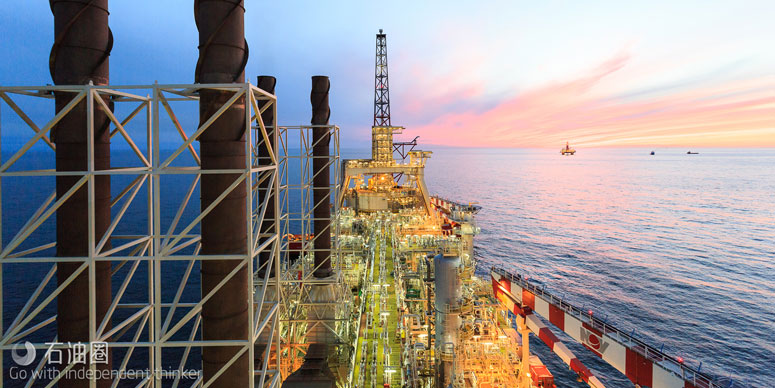With oil prices still trading around the $50/barrel mark, oil and gas companies will likely revisit costly field development projects, as BP plc did late last year with Mad Dog 2 development project.
The company was able to reduce project costs through system optimization, collaboration with co-owners, simplification of the design using industry-led solutions and competitive bidding to capture deflationary pricing. BP also changed the development concept which can take advantage of standardized designs, BP spokesperson Jason Ryan told Rigzone. The Mad Dog 2 design now looks more similar to field development projects pursued in the past, Caitlin Shaw, research director with Wood Mackenzie, said.
Does BP’s design signal the end of the oil and gas megaproject era? For the most part, yes, industry insiders told Rigzone.
Megaprojects, particularly for deepwater, might crop up occasionally over the next five to 10 years. However, Wood Mackenzie expects to see far fewer of these projects compared to the first half this decade, Shaw said.
Offshore field development costs were already out of control prior to the 2014 oil price collapse. To keep costs under control going forward, oil and gas operators will forgo standalone production facilities altogether for some projects, opting instead to use existing production facilities or subsea tiebacks, Shaw said. Companies may also opt to stretch out project development. Rather than execute a major project in a year, they might develop a field over a four to six year period, Shaw said.
A good example of a discovery that went from facility to subsea tieback is the Constellation discovery. Formerly known as Hopkins, Anadarko Petroleum Corp. now owns the discovery, Imran Khan, senior research manager at Wood Mackenzie, said.
The oil price downturn will not prompt operators to revisit production facility design, but project strategies, relationships with engineering, procurement and construction (EPC) contractors, and project bidding, Shaw said. Oil and gas companies are also not likely to look to emerging technologies for field development projects. Testing and implementing new technologies onshore is easier as onshore represents fewer risks that oil and gas companies have to mitigate, Shaw explained.
One major technology priority for the deepwater Gulf of Mexico is the development of 20K technology. A lot of companies have made progress in this area, but the oil price downturn has dried up research and development budgets. What will drive the implementation of technology is the demand, Khan said.
Even at $45/barrel oil, oil and gas companies should make money as long as costs are aligned, Gautum Chaudhury, deepwater technology advisor for BHP Billiton Petroleum, told Rigzone. When oil was trading at $18 to $20/barrel in 2001, companies were making more money in terms of percentage of profit compared with 2012, when oil prices were trading at more than $100/barrel.
“The problem is that construction and supply costs escalated to unsustainable levels,” Chaudhury told Rigzone. “Most of the money in a project goes to construction and supply, not engineering. While oil prices have declined, construction equipment and vendor costs haven’t.”
Chaudhury said he has heard discussions about companies trying to align costs, but when oil prices recover, it’s likely going to be business again as usual.
It’s also likely that there will not be enough major offshore projects occurring in the next two years or so. The standalone projects that do move forward will likely be larger fields, say of 1 billion barrels, versus fields with $500 million barrels. Companies also might have trouble moving forward with major offshore projects if the industry is unable to hire back the engineers and technicians who make products. A shortage of desktop engineers – the people who design projects – won’t likely be an issue.
Business Process Innovation Needed to Address Project Costs
The oil and gas industry should adopt innovative business processes for the capital planning and estimating of major projects, Ron Beck, E&C Industry Marketing Director with AspenTech, said.
Improving organizational performance in the areas of bidding and front end project execution will most certainly be a strategic topic in many oil and gas, chemical and engineering contractor boardrooms in 2017. Implementing better estimating software technology, combined with more collaborative business processes, will provide a huge opportunity for improvement in capital projects, such as driving drive down capital costs on projects by up to 25 percent, Beck said.
AspenTech’s survey of 161 organizations last year found that 50 percent of the capital planning and estimating groups are dissatisfied with current practices.
“Most of these organizations still use Excel, even for very large and complex projects, and a startlingly high percent use manual data handover from department to department,” Beck stated.
The rapid capital projects business evolution, due to macro-economic pressure, will force much more agile reaction times, and those companies that change quickly will be the winners.
“Most executives in the EPC industry and their clients know that the current downturn in capital projects workload is a critical time to drive innovative business processes, but they are frustrated at resistance in estimating leadership. This has some urgency, because the window to invest in change is already beginning to show signs of narrowing,” Beck said.
“The back end of the detailed engineering process has been updated through automated technologies, but the front-end engineering design (FEED) process has not gotten as much attention in terms of improvements,” Beck said.
“The question is whether executives will have the courage and leadership to force bid leaders, estimating leaders, and FEED engineering leaders to think laterally and apply new approaches. With fully proven solutions available today, organizations have the opportunity to reduce or eliminate dependency on spreadsheets, increase the electronic transfer of engineering data between engineering disciplines and estimating, standardize estimating methods between estimating groups in a company and between individual estimators and more,” Beck said.
Knowledge capture in software is going to be increasingly crucial in 2017 as is transparency between client and contractor, Beck noted, adding that model-based estimating offers a competitive advantage. Model-based estimating will become critical as waves of experienced senior estimators retire and EPC firms face tremendous pressure produce accurate and precise capital equipment estimates.
Organizations need to implement an advanced model-based estimating system to achieve the efficiency, agility, speed and accuracy required to successfully capture a company’s unique proprietary costing basis and project cost history to ensure a competitive advantage, Beck said.
AspenTech also expects to see fast conceptual design in oil and gas during 2017. The upstream companies that AspenTech is working with have become extremely serious about capturing prior designs and templates, and mixing and matching best available project examples in an effort to speedup time to first oil and to reduce overall capital budgets and risk.
“We are seeing more and more organizations move from talking about modular and template-based design to putting these concepts into action,” Beck commented. “Companies that get ahead of this curve will have a cost and profit advantage in this challenging environment. Integrated and model based software systems will play a key role in enabling organizations to take leadership positions in this area.”
One strategy oil and gas companies should pursue is to actually own the engineering data for a project, and to have real-time, 24/7 access to that data, rather than project updates at milestones, Amish Sabharwal, EVP Americas at AVEVA, told Rigzone.
“It’s all about visibility for the project in terms of cost and schedule,” Sabharwal said. “Today, the process is very manual-based on contractual agreements between the EPC and the owner. This prevents visibility, making it difficult to foresee scheduled delays or cost overruns until it’s too late. As a result, oil and gas projects tend to get over-budget and over-schedule.”
This type of contract has been used by oil and gas owner/operators and the EPC community because, for such a long time, owners/operators were just held over the barrels by the EPC community. But project owners are getting smarter now, and EPCs are scrambling for the little work that is available. With this new philosophy, oil and gas companies can easily be fired if operators own their engineering content, Sabharwal said.
Houston EPC offices and owner/operators are starting to get busy, Sabharwal said. Not a lot of projects will be sanctioned right away and it won’t be like the heyday.


 石油圈
石油圈
